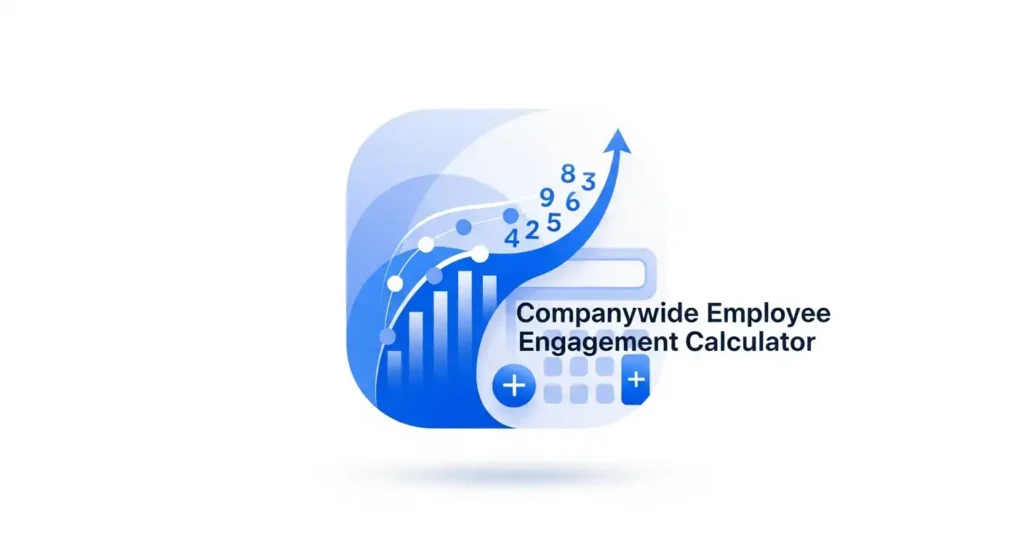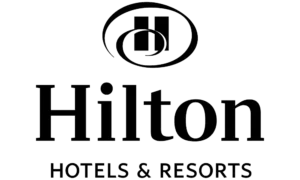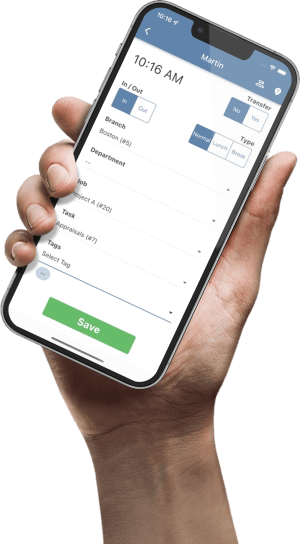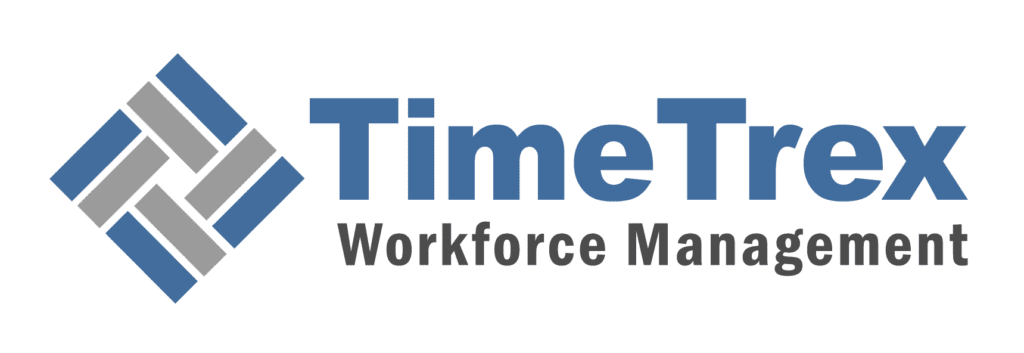Companywide Employee Engagement Calculator
Employee Engagement & ROI Calculator
This tool helps you measure the key dimensions of employee engagement and quantify its financial impact on your organization. Answer the questions below to receive a detailed analysis and actionable insights.
Part 1: Engagement Dimensions Survey
Rate the following statements on a scale of 1 (Strongly Disagree) to 10 (Strongly Agree) based on the general sentiment in your organization.
Work Engagement (Connection to the Work)
Team Engagement (Connection to Colleagues & Manager)
Organizational Engagement (Connection to the Company)
Behavioral Outcomes (Say, Stay, Strive)
Part 2: Key Performance Indicators (KPIs)
Enter your organization's data for the last measurement period (e.g., quarter or year) to calculate key engagement metrics.
Part 3: Financial & Workforce Data
This information is used to estimate the financial cost of disengagement and the potential return on investment (ROI) from engagement initiatives.
Your Engagement Analysis
Overall Engagement Score
Engagement Dimensions Breakdown
Key Performance Indicators
Financial Impact Analysis
Actionable Recommendations
Based on your results, focus on the following areas to drive meaningful improvement in engagement:
Next Steps: Use these insights to facilitate dialogue with your teams. Co-create a SMART action plan focusing on 1-2 key areas, assign ownership, and track progress with pulse surveys.
Found our Free Companywide Employee Engagement Calculator useful? Bookmark and share it.

Measuring and Activating Employee Engagement
For modern HR managers, measuring employee engagement is no longer a soft metric—it's a critical driver of organizational excellence. Effective employee engagement strategies directly impact profitability, productivity, and retention. This guide provides a strategic framework for measuring employee engagement, analyzing the data, and creating high-impact action plans. Understanding how to accurately measure and activate employee engagement is the key to unlocking your workforce's full potential and building a resilient, high-performing organization.
TL;DR: Employee engagement is the emotional and mental connection an employee has to their work, team, and organization. It's distinct from satisfaction or happiness and is a powerful predictor of business outcomes like profitability, productivity, and lower turnover. To measure it effectively, use a mix of quantitative tools (like annual surveys, pulse surveys, and eNPS) and qualitative methods (one-on-one meetings, stay interviews). The most crucial step is to transparently communicate results and create collaborative, data-driven action plans. Failing to act on feedback is worse than not asking for it. The future lies in AI-driven, continuous listening platforms, but these must be used ethically to maintain employee trust.
Table of Contents
- The Engagement Imperative: Definition, Differentiation, and Business Impact
- The Measurement Toolkit: Quantitative Methodologies
- The Human Element: Qualitative Measurement Approaches
- From Data to Dialogue: Analysis and Action Planning
- The Strategic Investment: Building the Business Case for Engagement
- The Future of Engagement Measurement
The Engagement Imperative: Definition, Differentiation, and Business Impact
Employee engagement has emerged from the periphery of human resources to become a central pillar of modern business strategy. It is no longer a discretionary initiative but a critical, measurable driver of organizational performance. For leaders, understanding the nuances of what engagement is—and what it is not—is the first step toward unlocking its profound potential. This section defines the multi-dimensional nature of employee engagement, distinguishes it from related but strategically distinct concepts, and presents the definitive, data-driven case for its impact on financial outcomes and competitive advantage.
Defining Employee Engagement: A Multi-Dimensional Construct
Employee engagement is the strength of the mental, emotional, and motivational connection an employee feels toward their work, their team, and their organization. It represents the level of commitment and emotional investment employees bring to their roles and to the broader success of the enterprise. This goes far beyond mere contentment with a job; it is a state of being physically, mentally, and emotionally connected to one's work, leading to the exertion of discretionary effort—the willingness to go above and beyond the basic requirements of the job. For a deeper dive, consider exploring what employee engagement truly means and how to boost it.
Cognitive and Emotional Dimensions
Engagement is a dual-faceted experience. Cognitive Engagement refers to the degree to which an employee is intellectually stimulated, focused, and absorbed in their work. Emotional Engagement encompasses qualities like pride in the organization, a strong sense of loyalty, and a feeling of belonging.
Three Levels of Connection
An employee's overall engagement is a composite of their connection to three distinct areas of their work life: Work Engagement (connection to the work itself), Team Engagement (connection to colleagues and manager), and Organizational Engagement (connection to the company's mission and values).
Aon Hewitt's "Say, Stay, Strive" Model
This practical model translates the internal state of engagement into observable, business-relevant behaviors. Engaged employees:
- Say: They speak positively about the organization.
- Stay: They have an intense desire to remain a part of the organization.
- Strive: They are motivated to exert extra effort and contribute.
The Critical Distinction: Engagement vs. Satisfaction, Happiness, and Morale
A common and costly mistake is to use terms like satisfaction, happiness, and engagement interchangeably. While related, they measure fundamentally different things. Employee satisfaction refers to an employee's contentment with the transactional elements of their job, while engagement is a deeper connection to the organization's culture and goals. A satisfied employee might perform their duties adequately but lacks the passion to go above and beyond. An engaged employee is almost always satisfied, but a satisfied employee is not necessarily engaged.
The Strategic Value of an Engaged Workforce: A Data-Driven Analysis
Measuring and improving employee engagement is not a "soft" HR initiative; it is a hard-nosed business strategy. Data consistently shows that organizations with highly engaged workforces significantly outperform their peers. A landmark meta-analysis by Gallup found that business units in the top quartile of employee engagement realized dramatic improvements, including:
- 23% higher profitability
- 18% higher sales productivity
- 10% higher customer loyalty
- 81% lower absenteeism
- Up to 51% lower turnover
The imperative is underscored by the immense economic cost of disengagement, estimated to cost the global economy $8.9 trillion in lost productivity.
The Measurement Toolkit: Quantitative Methodologies
To manage employee engagement effectively, organizations must first measure it accurately. Quantitative methodologies provide the scalable, data-driven foundation for understanding engagement levels across the enterprise. A sophisticated measurement strategy integrates multiple methods to create a comprehensive view of workforce health.
Surveying the Landscape: Annual vs. Pulse Surveys
Surveys remain the most common method for measuring engagement. The two primary formats, annual and pulse surveys, serve distinct but complementary purposes. Annual Engagement Surveys are comprehensive assessments that establish a robust, organization-wide baseline. In contrast, pulse surveys are short, frequent check-ins designed to take the "pulse" of the workforce in real time. The most effective listening strategies utilize both: the annual survey sets the strategic direction, and pulse surveys monitor progress and allow for tactical adjustments.
The Employee Net Promoter Score (eNPS): A Measure of Advocacy
The Employee Net Promoter Score (eNPS) is a widely adopted KPI that measures employee loyalty with a single question: "On a scale of 0-10, how likely are you to recommend our company as a place to work to a friend or colleague?"
| Responder Category | Score | Description |
|---|---|---|
| Promoters | 9-10 | Loyal advocates who are enthusiastic and engaged. |
| Passives | 7-8 | Satisfied but not deeply connected; vulnerable to competitors. |
| Detractors | 0-6 | Dissatisfied or disengaged; may undermine culture. |
Calculation Formula
The eNPS score is calculated by subtracting the percentage of Detractors from the percentage of Promoters. The resulting score can range from -100 to +100. While its simplicity is a strength, the eNPS should be followed by a qualitative question to understand the "why" behind the score.
Validated Engagement Scales: Scientific Rigor
For a more scientifically robust measure, organizations can use academically validated scales like the Gallup Q12 or the Utrecht Work Engagement Scale (UWES). These instruments use a series of questions statistically proven to correlate with key business outcomes, providing confidence that you are measuring engagement in a reliable way.
Behavioral and HRIS Metrics: Measuring the Consequences of Engagement
While surveys measure feelings, behavioral metrics tracked through a Human Resource Information System (HRIS) measure the observable outcomes.
Turnover and Retention Rates
High turnover is a clear sign of engagement issues. It's crucial to calculate your employee turnover rate to understand its impact.
Conversely, a high retention rate suggests a healthy, engaging culture. A healthy rate is typically considered to be 90% or higher.
Absenteeism Rate
Unplanned absences are a powerful leading indicator of disengagement and burnout. The absenteeism rate provides an early warning signal before an employee decides to leave permanently.
The Human Element: Qualitative Measurement Approaches
While quantitative metrics provide the "what," qualitative methods uncover the "why." These approaches capture the rich context and human stories behind the data, transforming numbers into actionable insights.
Structured Conversations: The Power of One-on-One Meetings
Regular, well-conducted one-on-one meetings are the single most powerful tool for continuously monitoring and nurturing employee engagement. To be effective, they must be more than informal chats; they require structure, a consistent cadence, and a focus on listening. Managers should follow the 80/20 rule—listening 80% of the time and using their 20% to ask probing, open-ended questions like, "What obstacles are getting in your way?" and "What can I do to better support you?"
Proactive Retention: Stay Interviews
Stay interviews are the strategic antithesis of the reactive exit interview. They are structured conversations with high-performing employees aimed at understanding what keeps them at the company. By proactively conducting stay interviews, managers can address concerns and reinforce motivating factors before a valuable employee even considers leaving.
Retrospective Analysis: Exit Interviews
Though a lagging indicator, the exit interview remains a valuable source of candid feedback. Departing employees often feel free to discuss systemic issues related to management, culture, or compensation. To maximize honesty, these should be conducted by a neutral third party, such as an HR representative.
Collective Insights: Focus Groups
Focus groups are small, facilitated discussions designed to explore specific topics that have emerged from quantitative data. For example, if a survey reveals low scores for "collaboration," a focus group can be used to discuss the perceived barriers and brainstorm solutions.
| Methodology | Primary Objective | Typical Frequency | Data Type | Key Advantages |
|---|---|---|---|---|
| Annual Survey | Establish baseline, benchmark, identify broad trends | Annual | Quantitative | Scalable, comprehensive, good for trend analysis |
| Pulse Survey | Real-time check-in, track progress | Weekly, Monthly, Quarterly | Quantitative | Agile, timely, high response rates, actionable |
| eNPS | Measure employee loyalty and advocacy | Quarterly, Semi-Annually | Quantitative | Simple, easy to track, strong link to brand advocacy |
| One-on-One Meeting | Build trust, provide continuous feedback | Weekly, Bi-weekly | Qualitative | Deep individual insight, builds relationships |
| Stay Interview | Proactive retention of key talent | Annual | Qualitative | Highly targeted, prevents turnover, demonstrates value |
From Data to Dialogue: Analysis and Action Planning
The value of measurement is realized not when data is gathered, but when it is translated into meaningful dialogue and concrete action. An organization's commitment to a rigorous, transparent, and accountable action-planning process is what separates effective engagement strategies from performative exercises.
Best Practices in Survey Data Analysis
Transforming raw survey data into strategic insights requires a disciplined approach. The most powerful insights are rarely found in the overall, aggregated scores. True understanding comes from segmenting the data by department, job level, tenure, and individual manager. A thorough analysis weaves quantitative scores with qualitative comments to understand the "why" behind the numbers. For a comprehensive overview, see this guide on analyzing survey results.
Communicating Results with Transparency and Purpose
The single most corrosive mistake a company can make is to ask for feedback and then respond with silence. This communicates that employee opinions are not valued and erodes trust. It is better not to conduct a survey at all than to fail to communicate the results and the resulting actions. An effective communication plan is multi-tiered, involving an executive review, manager enablement with team-specific results, and a company-wide summary of key findings and focus areas.
Developing a High-Impact Action Plan
Action planning should not be a top-down directive. The most effective plans are co-created by managers and their teams. This democratizes engagement, transforming it from an HR program into a shared, team-level responsibility. To ensure accountability, every action item in the plan must follow the SMART framework:
- Specific: Clearly define what will be done.
- Measurable: Define what success looks like.
- Achievable: Ensure the goal is realistic.
- Relevant: Align the action with the feedback received.
- Timely: Set a clear deadline.
The Critical Importance of Follow-Through
An action plan is only as good as its execution. The process must include regular follow-up and progress reviews. The final, crucial step is to "close the loop" by communicating back to employees about the actions taken as a result of their feedback. This builds a virtuous cycle of trust and encourages thoughtful participation in the future.
The Strategic Investment: Building the Business Case for Engagement
To secure resources and organizational commitment, leaders must frame the investment in employee engagement not as an expense, but as a strategic imperative with a clear return on investment (ROI). This requires translating engagement data into the language of the C-suite.
Quantifying the Return on Investment (ROI)
A robust business case is built on quantifiable data. A standard formula can be used to calculate the return on engagement investments, which includes productivity gains and cost savings from reduced turnover and absenteeism.
Cost savings from reduced turnover is often the most significant benefit, given that replacing an employee can cost from 40% to over 200% of their annual salary.
Presenting to Leadership: Securing Executive Buy-In
The pitch to leadership must be tailored to the audience. For the CFO, focus on the hard numbers and ROI. For the CEO, frame the discussion around strategic advantages like innovation, customer loyalty, and building an agile organization. Ground your argument in your own organization's data to make the problem immediate and undeniable. Presenting the investment as a form of risk management against the high costs of disengagement can be highly persuasive.
Engagement as a Driver of Innovation and Employer Brand
Beyond direct financial returns, engagement initiatives build long-term value. Engaged employees feel a sense of psychological safety that encourages them to innovate. They also become your most credible brand ambassadors, helping to attract other high-caliber talent and significantly reducing recruitment costs.
The Future of Engagement Measurement
The field of employee engagement measurement is undergoing a profound transformation, driven by advancements in technology and data analytics. The traditional model of periodic surveys is giving way to a more continuous, predictive, and personalized approach.
The Rise of AI and Predictive Analytics
Artificial Intelligence (AI) and machine learning are reshaping how organizations listen to their employees. Real-time sentiment analysis using Natural Language Processing (NLP) can analyze unstructured data from internal chat platforms and emails to gauge mood continuously. The most significant leap is in predictive analytics for attrition, where AI models analyze hundreds of data points to identify employees at high risk of leaving with remarkable accuracy, enabling proactive intervention.
Navigating the Pitfalls: Challenges in Engagement Measurement
As tools become more sophisticated, so do the potential pitfalls. Organizations must guard against survey fatigue by ensuring action is taken on feedback. The foundation of honest feedback is trust, so guaranteeing anonymity and confidentiality is non-negotiable. Furthermore, the use of AI introduces significant ethical questions. Organizations must be transparent about what data is being collected and how it's used to avoid fostering a "Big Brother" culture of surveillance.
The Integrated Approach: The Role of Engagement Platforms
The future lies in integrated platforms that serve as a central nervous system for the employee experience. Companies like Culture Amp and Workday Peakon offer comprehensive solutions that combine multi-modal survey deployment, advanced analytics, manager enablement tools, and HRIS integration. These digital employee experience platforms connect the entire feedback loop, making it easier for organizations to build a sustainable, data-driven culture of continuous improvement.
Conclusion
The measurement of employee engagement has matured from a periodic HR function into a continuous, data-rich strategic discipline. The evidence is unequivocal: a highly engaged workforce is a direct driver of profitability, productivity, and innovation. A successful measurement framework combines quantitative scale with qualitative depth, but the central lesson is that measurement without action is futile. The decision to measure engagement must be synonymous with a commitment to organizational change, empowered by managers and shared by teams. As technology offers unprecedented insight, our responsibility to be transparent and ethical becomes paramount. Ultimately, the goal is to foster a continuous dialogue that builds trust and creates a workplace where every employee feels connected, valued, and motivated to contribute their best work.
Ready to Activate Your Employee Engagement Strategy?
Go beyond measurement and start building a high-performing, engaged workforce. TimeTrex's Human Resource Management (HRM) tools provide the platform you need to manage, engage, and retain top talent effectively.
Discover TimeTrex HRM SolutionsDisclaimer: The content provided on this webpage is for informational purposes only and is not intended to be a substitute for professional advice. While we strive to ensure the accuracy and timeliness of the information presented here, the details may change over time or vary in different jurisdictions. Therefore, we do not guarantee the completeness, reliability, or absolute accuracy of this information. The information on this page should not be used as a basis for making legal, financial, or any other key decisions. We strongly advise consulting with a qualified professional or expert in the relevant field for specific advice, guidance, or services. By using this webpage, you acknowledge that the information is offered “as is” and that we are not liable for any errors, omissions, or inaccuracies in the content, nor for any actions taken based on the information provided. We shall not be held liable for any direct, indirect, incidental, consequential, or punitive damages arising out of your access to, use of, or reliance on any content on this page.
Trusted By
Trusted by 3.2M+ Employees: 21 Years of Service Across Startups to Fortune 500 Enterprises
Join our ever-growing community of satisfied customers today and experience the unparalleled benefits of TimeTrex.










Strength In Numbers
Join The Companies Already Benefiting From TimeTrex
Time To Clock-In
Start your 30-day free trial!
Experience the Ultimate Workforce Solution and Revolutionize Your Business Today
- Eliminate Errors
- Simple & Easy To Use
- Real-time Reporting

Saving businesses time and money through better workforce management since 2003.
Copyright © 2025 TimeTrex. All Rights Reserved.
